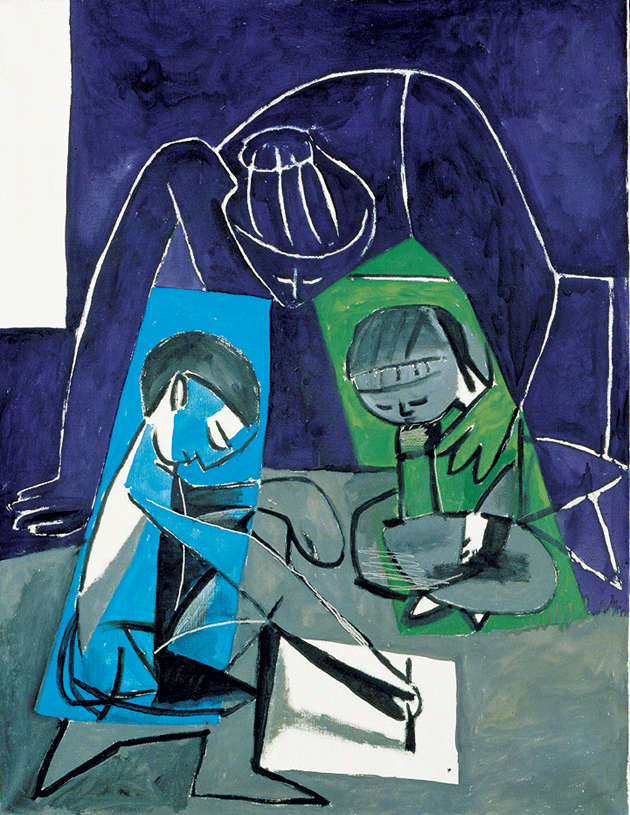He’s been a central character in the story for as long as Chris and I have been telling it to the kids.
“We had Emma’s egg but we didn’t have a sperm to put with it. So we went to the doctor, and he said, ‘Hey, I know a nice man called a donor who’ll give you some sperm.’ ”
“A nice man called Adona?”
“No, a donor.”
“A doughnut?”
“No, a donor, it means a giver. We’ve never met him, we don’t know his name.”
The kids (eleven and eight these days) haven’t asked much about this mystery man over the years. Recently Chris and I dug the twelve-year-old file out of the cabinet and read them the details: the shape of his earlobes, what one of his grandmothers died of, his favorite book.
Most of his grandparents were still alive and well at the time the file was put together, of course, because nobody’s accepted as a donor unless he’s what farmers call excellent stock. The donors listed on the sperm bank’s website sounded like radiantly healthy humans from the future, with ideal physical and mental traits and numbers for names (WX498! JB237!). It seemed the Donoghue genes were going to be the only dodgy ones. Nearsightedness, canker sores, absentmindedness, childhood constipation; height and loquacity were the only potentially useful ingredients I was sprinkling into the mix.

Claude Drawing, Françoise and Paloma, by Pablo Picasso © ARS, New York City/RMN-Grand Palais/Art Resource, New York City
Ingredients: I notice I’ve slid from agricultural metaphors to culinary ones. It’s almost impossible to discuss the procurement of human gametes without sounding cold-blooded or flippant. But choosing a donor was like nothing so much as shopping in a gourmet market, with prices to match. One site charged extra for their Premium Collection of sperm from men with Ph.D.’s. Chris and I both have Ph.D.’s, so we know what a feeble guarantee of intelligence they are. We rejected that site with hoots of mirth.
Choice is torture. Luckily, ours was narrowed down by several factors. To inseminate in our local fertility clinic, we needed sperm that was “Canadian-compliant.” (Great phrase, and how Canadian! It just means that the sperm has been tested for certain diseases.) All Chris and I really cared about was finding an open-identity donor. That meant a man willing to let the kids get his name and address and contact him after they turn eighteen — only if they want to, of course.
That left us with five Caucasian-like-us candidates, four of whom sounded like men I wouldn’t shake hands with, let alone combine chromosomes. The fifth seemed lovely.
It was difficult to decide how many units of semen to buy because you don’t know how many you’ll need. We ordered three; any fewer seemed like tempting fate to strike us with fertility problems. But we were lucky, so lucky. Courtesy of the first shot we got our son; with the second, three years later, we got our daughter; last year we finally threw away the third, like a libation to the gods.
In order to take some of the mystery out of the man, I often bring up the subject of genetic inheritance with the kids. (They’re much more interested in the other kind of inheritance: “Can I have your iPhone when you’re dead?”) They like to tease me; whenever they get praised for beauty or brains, they say, “That’s probably from the donor,” and cackle as I mime a stab wound to the heart.
Pause, while I pay our son a dollar to license for publication a joke of his own invention: “Why was my donor embarrassed? Because I have his genes!” (Jeans, get it?) We often hear our two explaining the gist of donor conception to kids they’ve just met, on beaches or at playgrounds, in countries such as France where our family structure causes confusion. No, you don’t actually need a dad, they say, you just need a sperm to put with the egg.
When I think about our donor, I don’t feel either cold-blooded or flippant. I feel grateful; vaguely, but deeply. I hope he’s thriving. I bet when he thinks about the babies he gets a little glow. Since Chris and I saw The Kids Are All Right it’s been a running joke between us: If he turns out to be Mark Ruffalo, I’m the one who has an affair with him, okay? I do occasionally wonder if he’s at all nervous at the prospect of 2021, when the first of dozens of curious eighteen-year-olds could come knocking on his door. (Little-known fact: the sperm banks “retire” a man once he’s had a certain number of bio-kids.)
“One more thing,” the nurse said to us. “Are you planning to tell the child?” The two of us burst out laughing. “Most of our clients are heterosexual couples, so we have to ask that,” she said sheepishly. “Roughly half of them ignore our advice and keep it a secret.”
I really hope that fraction has gone down, more than a decade on. I pray that this particular creation story — no more complicated than any other, really — gets passed on till it’s banal, just part of what used to be called the birds and the bees. I hope the donors aren’t embarrassed, and the mothers aren’t embarrassed, and the kids aren’t embarrassed. None of us should be; we’re all sharing the jeans.





































































































